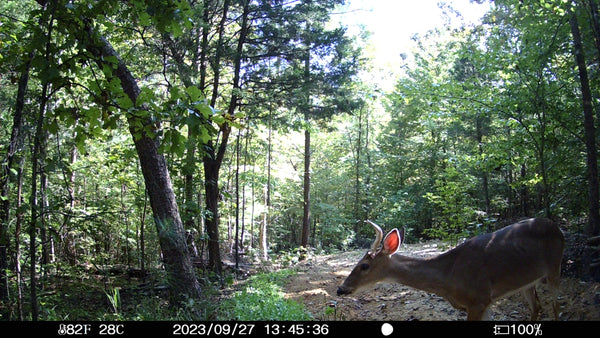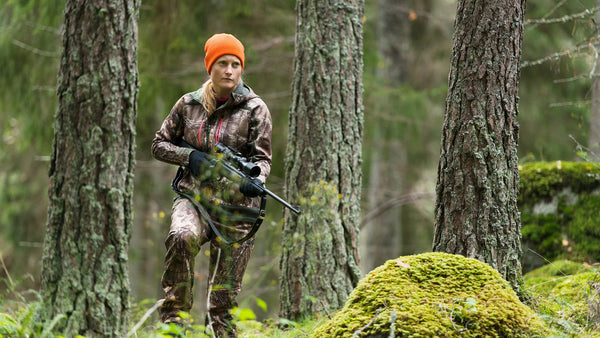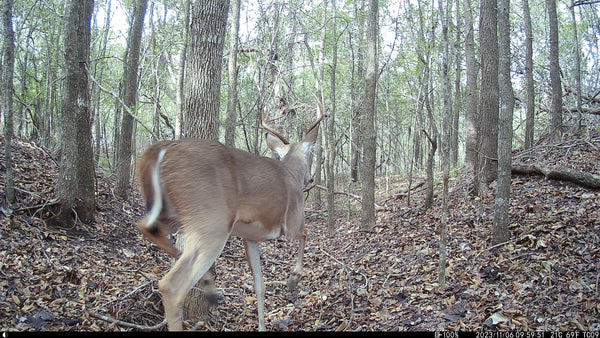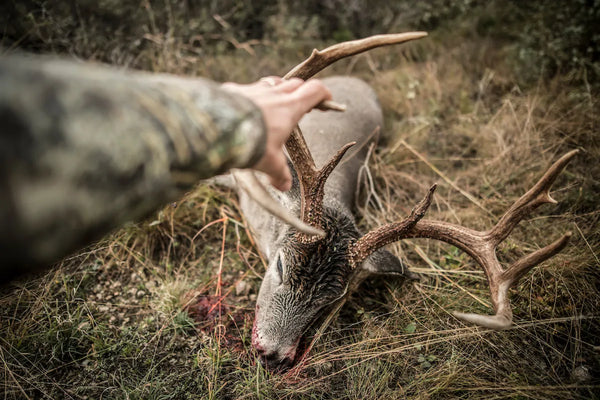Hunting, as one of the activities deeply rooted in human history, carries a rich cultural heritage and way of life. Before hunting became a sport, it was an important means of survival for mankind, determining his migrations and the rhythm of his life. Today, hunting has evolved into a multifaceted activity that is both a challenging recreational pastime, and a link to our natural heritage, providing a sustainable food source and an immersive way to be in nature.
However, modern hunting is often highly controversial. Many environmentalists and animal protectionists view hunting as a cruel act that is done only to fulfill the desire to kill. In reality, however, hunting offers far more benefits than that. It has a profound impact on the environment, human health, and society and culture. Let's explore the rich meaning and value of the ancient activity of hunting!

1.Ecological Balance Maintenance
Hunting helps to control the number of wild animals and maintain ecological balance. Overpopulation of animal populations may lead to food shortages, the spread of diseases, and destruction of habitats, affecting the stability of the entire ecosystem. Through hunting, the number of wild animal populations can be regulated to prevent their overgrowth and protect the living environment of other species, thus maintaining ecological balance. For example, too many deer may lead to the destruction of vegetation and an increase in vehicle accidents, so moderate hunting is one of the most important means to ensure the coexistence of wildlife and humans.
Example:
- Hunting traps overpopulated herds of wild boars, reducing their damage to the land, protecting crops, and preserving farmers' livelihoods.
- Controlling the number of wild animal populations prevents the overpopulation of predators such as lions and leopards, maintains the balance of other animal populations, and promotes the healthy development of the ecosystem.
2.Organic Food Source
Hunting provides a healthy, organic food source such as game meat. Wildlife meat is usually healthier, free of hormones and antibiotics, and lower in fat, rich in high-quality protein and nutrients. Hunters can harvest, process, and cook their game meat, ensuring freshness and quality of food and providing delicious, healthy meals for their families. Compared to factory-farmed meat, game meat is more naturally pure, tastes better, and is richer in nutrients and health benefits.
Example:
- Hunter-caught venison provides a family's primary source of protein and is rich in nutrients that help maintain the family's health.
- By harvesting wild turkeys, hunters obtain organic, natural poultry meat that is more nutrient-rich and flavorful than factory-farmed meat.

3.Exercise and Health
Hunting promotes outdoor sports and exercise, which contributes to cardiorespiratory health and physical fitness. Hunting requires hunters to walk, track, and carry equipment in a natural environment, providing a comprehensive form of physical exercise. Long days of tracking on foot, carrying a game home, or climbing steep terrain can increase a hunter's strength and endurance, improve cardiovascular health, and enhance physical fitness. Additionally, outdoor exercise can help reduce stress, relieve anxiety, and enhance mental health.
Example:
- During hunting, hunters need to climb over hills, cross rivers, and other kinds of terrain, and this physical activity promotes muscle development and joint flexibility.
- Hunting activities provide opportunities for outdoor sports, allowing hunters to get away from the hustle and bustle of the city and enjoy the beauty of nature, releasing stress and promoting physical and mental health.

4.Protecting the Environment
Hunting provides financial support for wildlife conservation and habitat protection. Hunting provides a source of funding for conservation through trophy license fees, hunting site management fees, donations, and other fees required by hunters. These funds are used for wildlife habitat maintenance, wildlife conservation, and restoration programs, scientific research, and monitoring, and help protect endangered species and ecosystem integrity. Hunters also often donate a portion of their harvest to charitable organizations to support wildlife conservation efforts.
Example:
- Habitat Conservation: hunting license fees and donated funds are commonly used to maintain and restore wildlife habitat. For example, these funds can be used to clean up trash in habitats, repair damaged ecosystems, and plant endangered plants.
- Protecting Endangered Species: Hunting funds are also used to support conservation and restoration projects for endangered species. Through these projects, hunters can participate in conservation programs for endangered species, such as population monitoring, captive breeding, and habitat protection.
- Wildlife Monitoring and Scientific Research: A portion of hunting license fees and donated funds are used for wildlife monitoring and scientific research. These funds are used for the monitoring of wildlife populations and health, as well as research on changes in ecosystem health and dynamics.

5.Economic Promotion
Hunting boosts the local economy by leading to the development of tourism and related industries. Hunting attracts many hunters and tourists to the hunting areas, which promotes the development of local hotels, restaurants, transportation, retail, and other industries. Hunting tourism activities provide employment opportunities for residents, increase tax revenues, and promote the prosperity of the regional economy.
Example:
- Hotel and lodging industry development: Hunters and tourists come in droves during the peak hunting season, increasing the demand for local hotels and lodging facilities. It promotes the development of the hotel and lodging industry and increases the capacity of the local tourist reception.
- Growth in transportation and traffic: During the peak hunting season, there is a need to transport hunting gear and equipment, and many tourists travel between hunting sites and cities. As a result, the local transportation and haulage industry will also be enhanced.

6.Cultural Heritage and Community Ties
Hunting is a traditional activity in many regions, passed down from generation to generation and carrying a rich historical and cultural dimension. Hunting also promotes human interaction and community ties and has become an important part of social life in many regions. Hunters often establish deep friendships and cooperation among themselves, sharing experiences and skills and pursuing the joy of hunting together.
Example:
- Cultural transmission: In some areas, hunting is a tradition passed down from generation to generation, with the elders of the family passing on hunting skills and values to the younger generation, which is not just a passing on of skills, but also of culture and values.
- Community ties: Hunting activities promote ties and cooperation among community members. Hunters often organize hunting activities, share resources and experiences, and work together to protect and manage local wildlife resources, which strengthens community cohesion.
- Cultural celebrations and festivals: Some areas organize hunting-related celebrations and festivals, such as hunting competitions and exhibitions, which attract a large number of participants and spectators and become an important part of the cultural life of the community, enriching people's lives.
7.Wildlife Management and Scientific Research
Hunters often assist in wildlife monitoring, data collection, and scientific research, providing valuable information and support for conservation efforts. Their observations and records help to understand wildlife population size, distribution, migration, and behavior, and provide a basis for developing effective management measures. Hunting activities also promote in-depth study and understanding of the ecosystem, which helps to protect biodiversity, maintain ecological balance, and promote sustainable development.
Example:
- Population monitoring: Hunters often observe wildlife movements and numbers in the field and record these observations. For example, they may record the number and species of deer herds, as well as their migratory routes and ranges during different seasons.
- Ecosystem impacts: Hunting can provide important information about changes in ecosystem health and dynamics. Through hunter observation, scientists can learn about the effects of hunting on wildlife populations and their role in local ecosystems.
- Species research: Hunters' involvement in capturing and tagging wildlife provides valuable data for scientific research. For example, hunters may capture and tag deer or bears to track their migratory paths and population numbers to support conservation measures and management plans.
Summarize
Hunting is an ancient and multifaceted activity that provides many benefits to society and the environment in addition to fulfilling the pleasures and challenges of the hunter. From promoting economic development to protecting wildlife to passing on culture and supporting scientific research, hunting plays a positive role in many ways. Through hunting, people not only enjoy the outdoors and healthy food but also contribute to the protection of the environment and the maintenance of ecological balance. However, it is important to exercise the right to hunt responsibly, comply with laws and regulations, and ensure the sustainability of hunting activities to ensure that these benefits are sustained.

